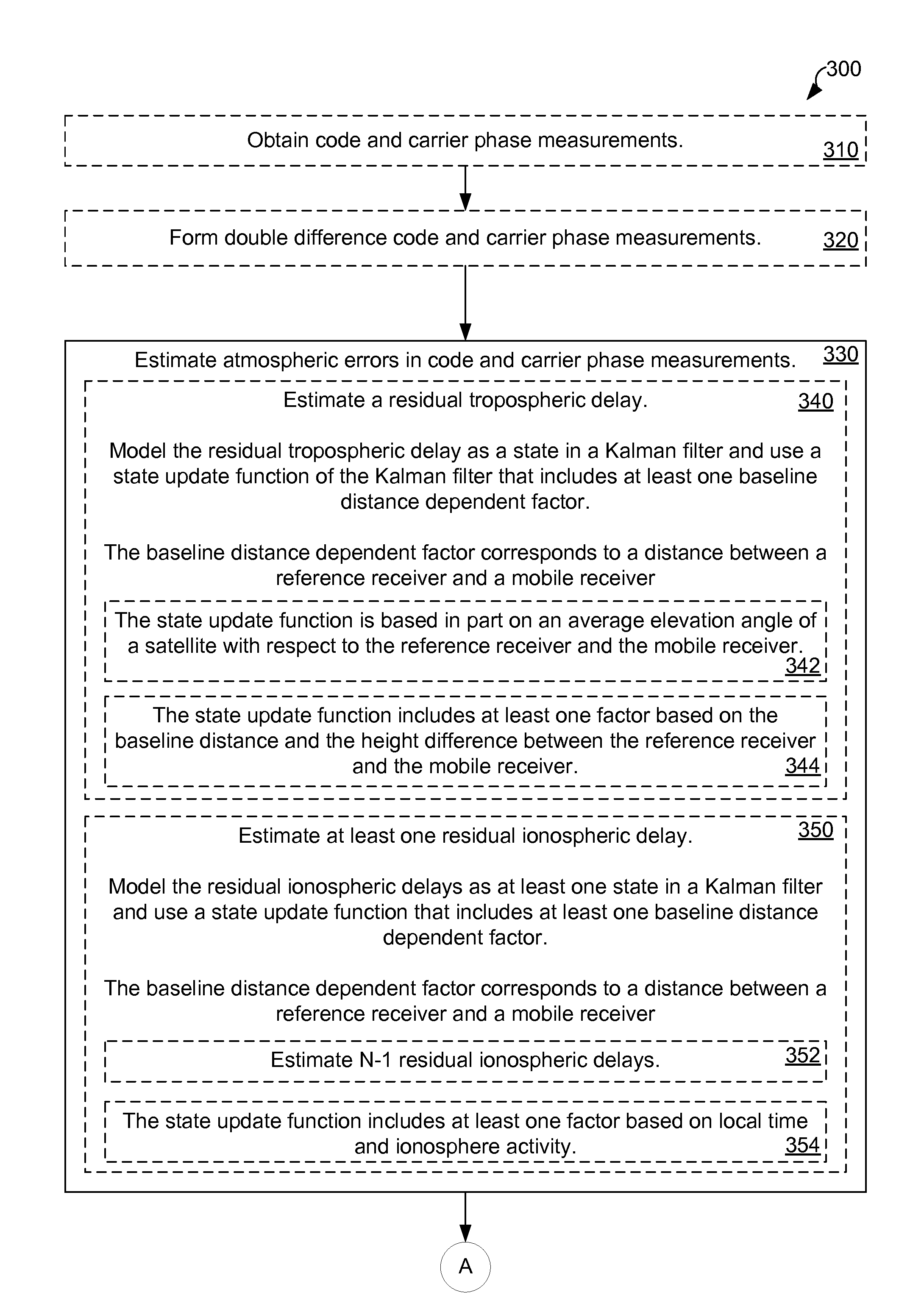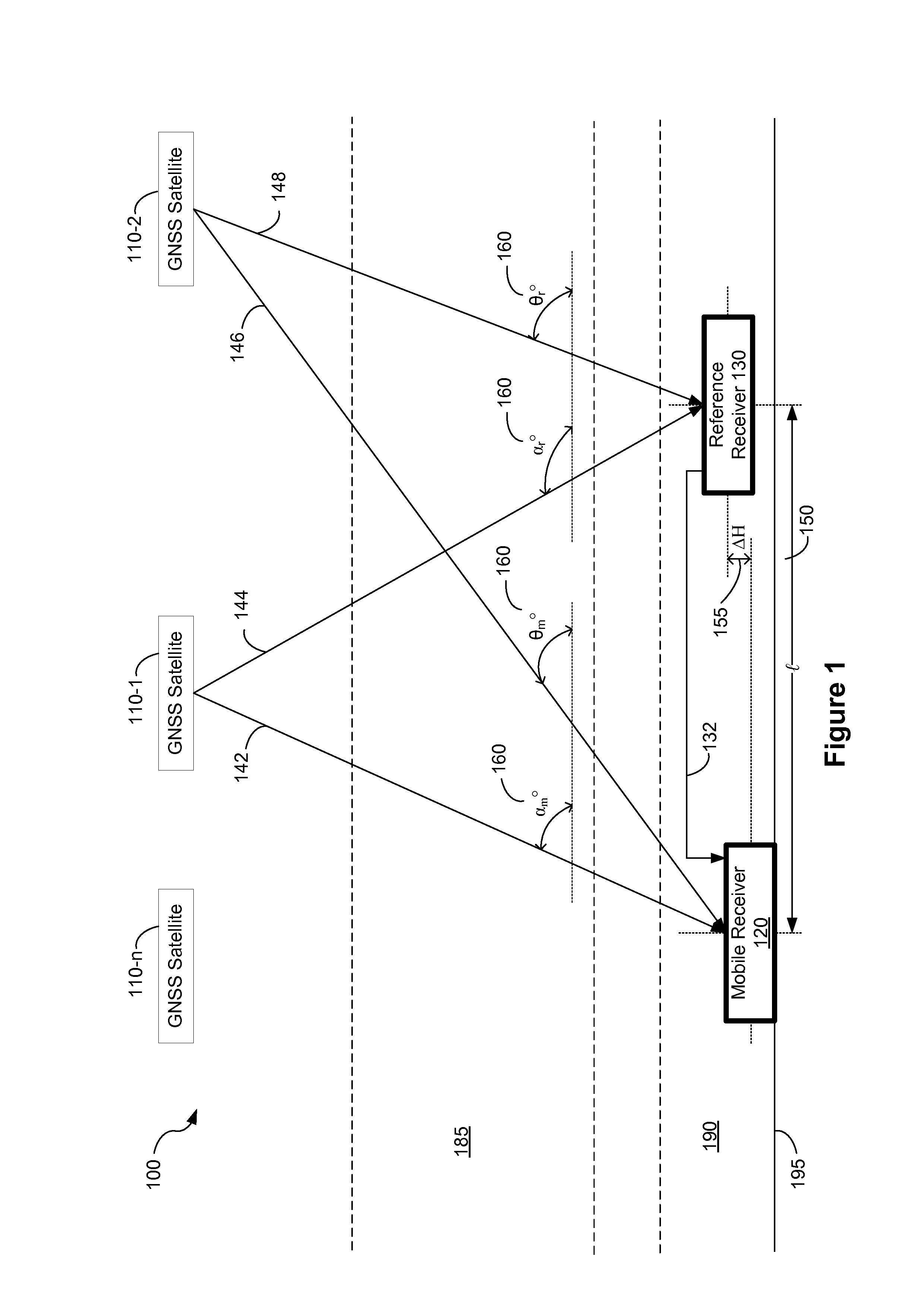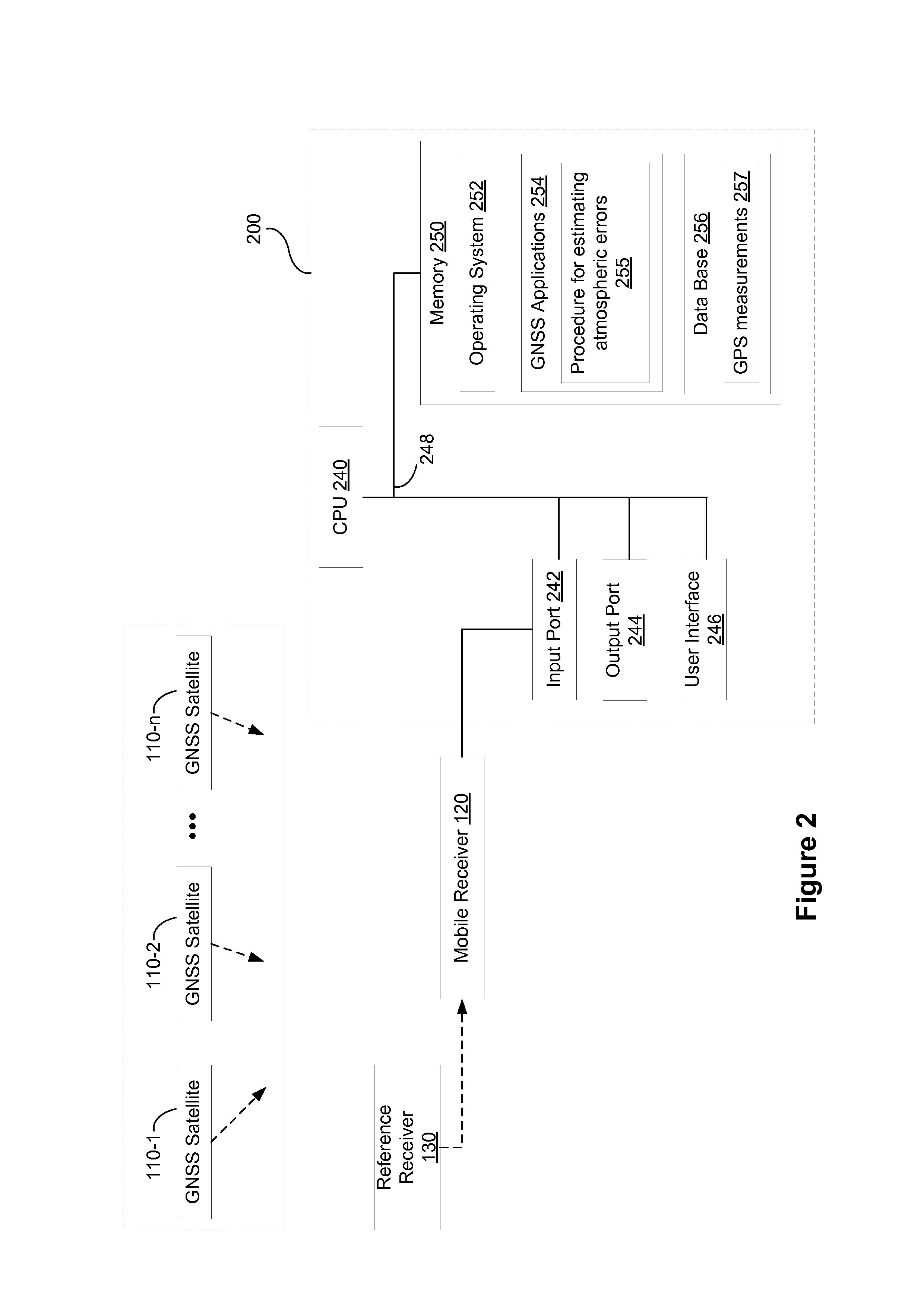Distance dependent error mitigation in real-time kinematic (RTK) positioning
a real-time kinematic and distance-dependent technology, applied in the field of positioning system technology, can solve the problems of increasing the difficulty of reliable ambiguity resolution, unable to solve residual biases or errors after double-differencing, and the problem of ignoring residual biases or errors for ambiguity resolution
- Summary
- Abstract
- Description
- Claims
- Application Information
AI Technical Summary
Benefits of technology
Problems solved by technology
Method used
Image
Examples
Embodiment Construction
[0009]A method for mitigating distance dependent atmospheric errors in code and carrier phase measurements includes estimating a residual tropospheric delay, a plurality of residual ionospheric delays and an ambiguity value. An estimated position of a mobile receiver is then updated in accordance with these estimates.
[0010]In one embodiment, a residual tropospheric delay is modeled as a state in a Kalman filter. In one embodiment, a plurality of residual ionospheric delays are modeled as states in a Kalman filter. The state update functions of the Kalman filter include at least one baseline distance dependent factor. The baseline distance dependent factor corresponds to a distance between a reference receiver and a mobile receiver.
[0011]In one embodiment a plurality of ambiguity values are stored in a plurality of states in the Kalman filter. These states are then updated in accordance with a state update function that includes at least one dynamic noise factor.
[0012]The estimation ...
PUM
 Login to View More
Login to View More Abstract
Description
Claims
Application Information
 Login to View More
Login to View More - R&D
- Intellectual Property
- Life Sciences
- Materials
- Tech Scout
- Unparalleled Data Quality
- Higher Quality Content
- 60% Fewer Hallucinations
Browse by: Latest US Patents, China's latest patents, Technical Efficacy Thesaurus, Application Domain, Technology Topic, Popular Technical Reports.
© 2025 PatSnap. All rights reserved.Legal|Privacy policy|Modern Slavery Act Transparency Statement|Sitemap|About US| Contact US: help@patsnap.com



